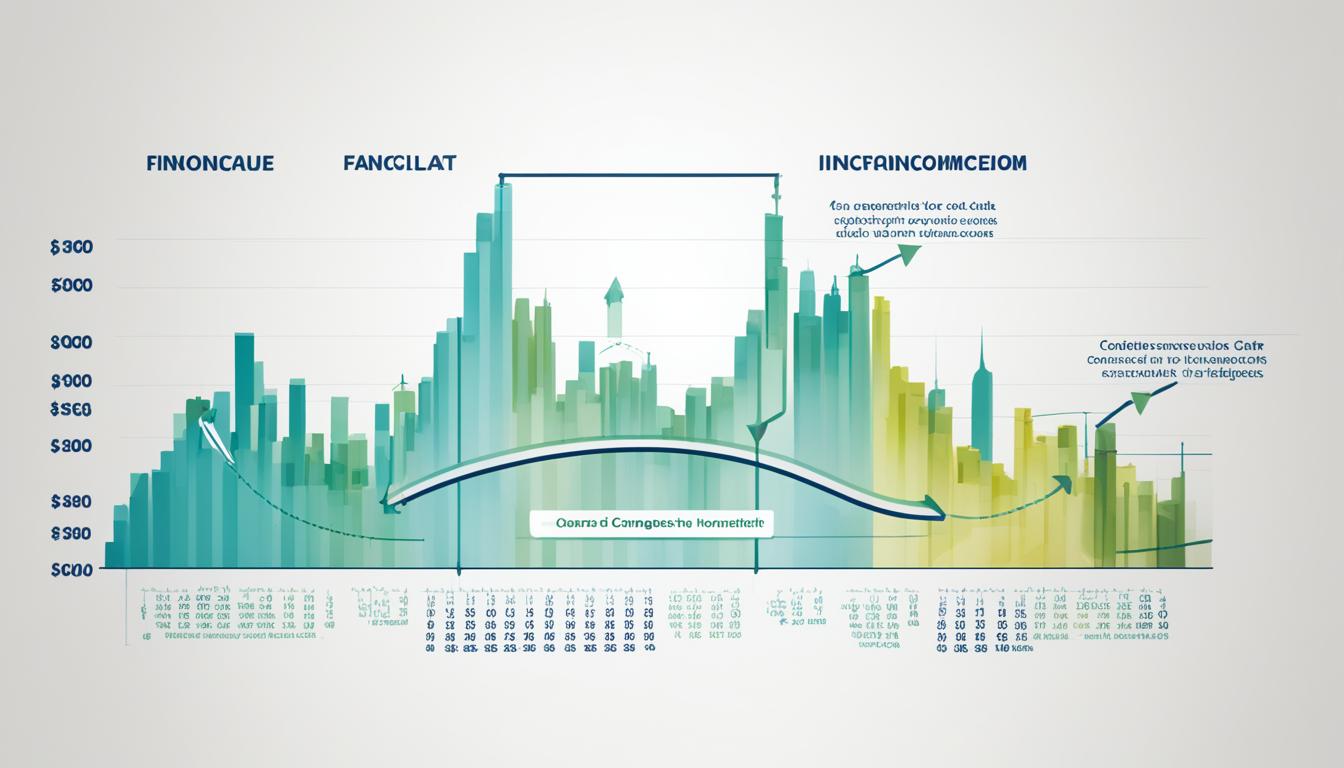Welcome to our comprehensive guide to understanding the statement of comprehensive income. In this article, we will dive into the details of this important financial statement, including its components, purpose, uses, advantages, and limitations. Whether you’re a business owner, investor, or simply interested in financial statements, this article will provide you with valuable insights.
What is a Statement of Comprehensive Income?
The statement of comprehensive income is a crucial component of a company’s financial reporting. It provides a comprehensive view of the company’s income during a specific period, encompassing both net income and other comprehensive income. This financial statement presents a detailed picture of the company’s financial performance, helping stakeholders understand its profitability and stability.
Net income, which represents the profit or loss from the company’s regular operations, is a key component of the statement of comprehensive income. It is calculated by deducting the cost of goods sold, expenses, taxes, and interest from the total revenue. Other comprehensive income consists of unrealized gains or losses on assets that are not reflected on the income statement. This can include gains or losses from financial instruments, foreign currency transactions, and other factors.
The statement of comprehensive income serves multiple purposes and has various uses for different stakeholders. For company management, it aids in planning and decision-making by providing detailed information about revenue sources and costs. Investors can analyze a company’s profitability and stability of earnings when considering potential investments. Additionally, the statement of comprehensive income is helpful for financial performance analysis and allows for the comparison of companies in the same industry.
While the statement of comprehensive income offers several advantages, such as providing a more comprehensive view of income and aiding in decision-making, it also has limitations. The inclusion of unrealized gains or losses on assets can distort the view of a company’s financial health. Moreover, it does not predict future profitability and only reflects income for a specific period. Therefore, it should be used in conjunction with other metrics and analysis to make informed decisions.
In conclusion, the statement of comprehensive income is a valuable financial statement that provides a comprehensive view of a company’s income. It includes both net income and other comprehensive income, giving a more accurate understanding of a company’s financial performance. While it has advantages in terms of providing detailed information for analysis and decision-making, it has limitations to consider. Overall, the statement of comprehensive income is an important tool in assessing a company’s financial health and performance.
Components of Comprehensive Income
The statement of comprehensive income consists of two main components: net income and other comprehensive income.
Net income represents the profit or loss generated from a company’s regular operations. It is calculated by subtracting the cost of goods sold, expenses, taxes, and interest from total revenue.
Other comprehensive income includes unrealized gains or losses on assets that are not reflected on the income statement. This can include gains or losses from financial instruments, foreign currency transactions, changes in pension liabilities, and other factors.
Both net income and other comprehensive income are important elements in understanding a company’s overall financial performance.

“Net income represents the profit or loss generated from a company’s regular operations.”
Purpose and Uses of the Statement of Comprehensive Income
The statement of comprehensive income serves several purposes and has various uses for different stakeholders. Its primary purpose is to provide a more complete and accurate picture of a company’s income by including both net income and other comprehensive income. This comprehensive view of income helps company management in planning and decision-making, as it provides detailed information about revenue sources and costs.
Investors can also use the statement of comprehensive income to analyze a company’s profitability and stability of earnings when considering potential investments. By examining the components of comprehensive income, investors can gain insights into a company’s ability to generate consistent profits and assess the risks associated with fluctuating income.
In addition to aiding management and investors, the statement of comprehensive income is also a valuable tool for financial performance analysis. By analyzing the trends and patterns in a company’s comprehensive income over time, analysts can evaluate the company’s financial health and performance. This analysis can involve comparing the comprehensive income of different periods, identifying areas of strength and weakness, and making informed projections based on historical data.
Financial performance analysis based on the statement of comprehensive income can provide valuable insights for strategic decision-making and long-term planning.
Furthermore, the statement of comprehensive income allows for comparisons between companies in the same industry. Investors and analysts can use the statement of comprehensive income to benchmark a company’s financial performance against its competitors. This comparison enables them to identify industry trends, assess market positioning, and make informed investment decisions.
The Importance of Comprehensive Income for Stakeholders
The purpose of comprehensive income is to provide stakeholders with a comprehensive understanding of a company’s financial performance. It goes beyond the traditional income statement by including other comprehensive income, which consists of unrealized gains or losses on assets that are not reflected in net income. By including these additional elements, comprehensive income offers a more accurate representation of a company’s overall financial health and performance.
| Stakeholder | Purpose of Using the Statement of Comprehensive Income |
|---|---|
| Company Management | Planning and decision-making based on detailed income information |
| Investors | Evaluating profitability and stability of earnings for investment decisions |
| Financial Analysts | Performing financial performance analysis and comparing companies in the same industry |

Advantages and Limitations of the Statement of Comprehensive Income
The statement of comprehensive income offers several advantages. It provides a more comprehensive view of a company’s income than the income statement alone, allowing for better analysis of profitability and decision-making. By including both net income and other comprehensive income, this statement presents a fuller picture of a company’s financial performance, capturing both realized and unrealized gains or losses.
One key advantage of the statement of comprehensive income is its ability to aid investors in comparing companies as potential investments. This comprehensive view of earnings enables investors to assess a company’s profitability and stability of earnings, which are crucial factors in making informed investment decisions.
“The inclusion of both net income and other comprehensive income in the statement of comprehensive income provides a comprehensive view of a company’s financial performance, giving investors a more accurate understanding of its earnings.”
However, it is important to recognize the limitations of the statement of comprehensive income. The inclusion of unrealized gains or losses on assets can distort the view of a company’s financial health, especially if these gains or losses are significant. As such, it is important to consider the impact of these unrealized items when analyzing a company’s financial performance.
Furthermore, the statement of comprehensive income only reflects income for a specific period and cannot predict future profitability. It is essential to use this statement in conjunction with other metrics and analysis to gain a holistic understanding of a company’s financial health and to predict its future performance accurately.

| Advantages of Statement of Comprehensive Income | Limitations of Statement of Comprehensive Income |
|---|---|
| Provides a comprehensive view of a company’s income | Potential distortion of a company’s financial health due to unrealized gains or losses on assets |
| Facilitates better analysis of profitability and decision-making | Cannot predict future profitability |
| Enables investors to compare companies as potential investments | Reflects income for a specific period only |
Conclusion
In summary, the statement of comprehensive income is a vital financial statement that provides a holistic perspective of a company’s income. It encompasses both net income and other comprehensive income, delivering a more accurate understanding of a company’s financial performance. By offering detailed information for analysis and decision-making, this statement has significant advantages.
However, it is important to consider its limitations, such as the potential distortion of unrealized gains or losses and its inability to predict future profitability. Nonetheless, the statement of comprehensive income remains an essential tool in evaluating a company’s financial health and performance.
FAQ
Why is the Statement of Comprehensive Income important?
It offers a comprehensive view of a company’s financial performance, helping stakeholders understand its profitability and stability.
How does net income differ from other comprehensive income?
Net income represents profits from regular operations, while other comprehensive income includes unrealized gains or losses not reflected in net income.
Who uses the Statement of Comprehensive Income?
Company management, investors, and financial analysts use it for planning, decision-making, and performance analysis.
What is the purpose of including other comprehensive income?
It provides a more accurate representation of a company’s overall financial health by including unrealized gains or losses.
How can investors use the Statement of Comprehensive Income?
Investors use it to analyze a company’s profitability and stability, aiding in making informed investment decisions.
Why should the Statement of Comprehensive Income be used with other metrics?
Because it has limitations, using it with other metrics provides a more holistic view of a company’s financial health.




